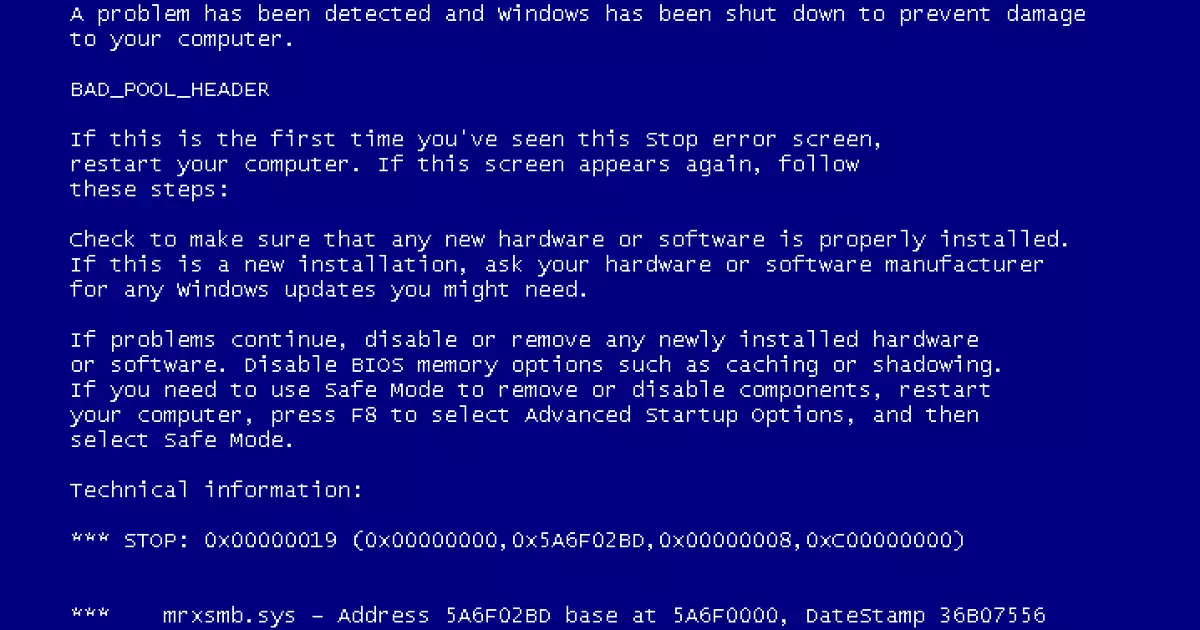In an era dominated by technological advancements, the experience of facing a system crash has become nearly universal. Picture it: you’re working late at night, fully engrossed in your latest project or game, and without warning, your screen transforms into an ominous shade of blue. The so-called ‘Blue Screen of Death’ (BSOD) has become an iconic representation of frustration within the digital realm. Yet, this shared moment extends beyond mere disappointment; it’s reminiscent of the collective outcry heard in the night at festivals—people bonding over a universally shared nuisance. It’s this strange camaraderie in tech tribulation that lends the BSOD a near-mythological status.
The Evolution of the BSOD
Microsoft’s introduction of the BSOD dates back to the inception of Windows in 1985; it has metamorphosed over the years, becoming almost a rite of passage for computer users. From its original form to the latest iteration, the BSOD signifies not only a failure of the operating system but also a moment of panic for users while they grapple with the fear of potential data loss. The recent announcement regarding a transition from the familiar blue background to a stark black screen—a Black Screen of Death (BlackSOD)—is not just a cosmetic change. Microsoft’s Vice President, David Weston, emphasizes a shift towards clarity, aiming to simplify the error identification process. However, one cannot help but think: is this merely a rebranding effort, cloaked in the guise of improving user experience?
Mythologizing Technical Failures
Historically, the BSOD has drawn reactions not dissimilar from the English festival-goers’ primal shout of “bollocks.” It encapsulates an ineffable blend of annoyance and humor, reminiscent of cultural rituals that celebrate collective frustration. The ritualistic nature of such reactions—it is as if we’re acknowledging our shared vulnerabilities in this technologically advanced world. The term “iconic” associated with the BSOD reflects not just its prevalence but also a societal tendency to romanticize struggle. In a modern workspace, where productivity is paramount, these symbolic failures often represent the cracks in an otherwise seamless facade of efficiency.
Technological failures, indeed, become folk legends in their own right, with each iteration of failure prompting users to swap stories, share memes, and even unite under a common banner of frustration. Just as the gaming world grieves over the Xbox 360’s infamous Red Ring of Death, so too do we acknowledge the BSOD as a tangible experience in the realm of personal and shared technology.
The Response to Digital Disruptions
The recent adjustments in how Microsoft presents the BSOD aligns closely with the evolving landscape of technology and security. Amidst increasing cybersecurity threats, resilience has emerged as a focal point for tech companies. The aforementioned statement on maintaining productivity while facing disruptions speaks volumes. Microsoft’s push for better clarity and information is a strategic response to a growing demand for transparency when things go wrong. This continues to feed into the narrative surrounding resilience not just as a buzzword but as a necessary approach for organizations navigating the complexities of modern technology.
Recent events, such as last year’s Crowdstrike outages—an incident that had many shouting “bollocks” in frustration—highlight the need for businesses, large or small, to stay proactive. Simultaneously, the timing of these updates falls under scrutiny. While Microsoft addresses some of the chaos in the tech world by revamping their error screens, their simultaneous decisions, like significant layoffs and military partnerships, leave one wondering about their true priorities. The profit margins continue to swell, yet the human element behind these transitions seems conspicuously absent.
The Cultural Impact of System Failures
These quirks of technology, such as the BSOD, serve as powerful reminders of our dependence on digital systems. With every system failure, we are given a moment to reflect on not just the strings of code that govern our machines, but also the very essence of human interactions—our frustrations, our humor, our resilience. Like the festival-goers rallying in the night, an array of unique voices rises to acknowledge these technical hiccups. Whether it’s a collective groan or a laugh shared among coworkers, these moments signify more than just setbacks; they are part of the tapestry that binds us together in the age of digital dependence.

